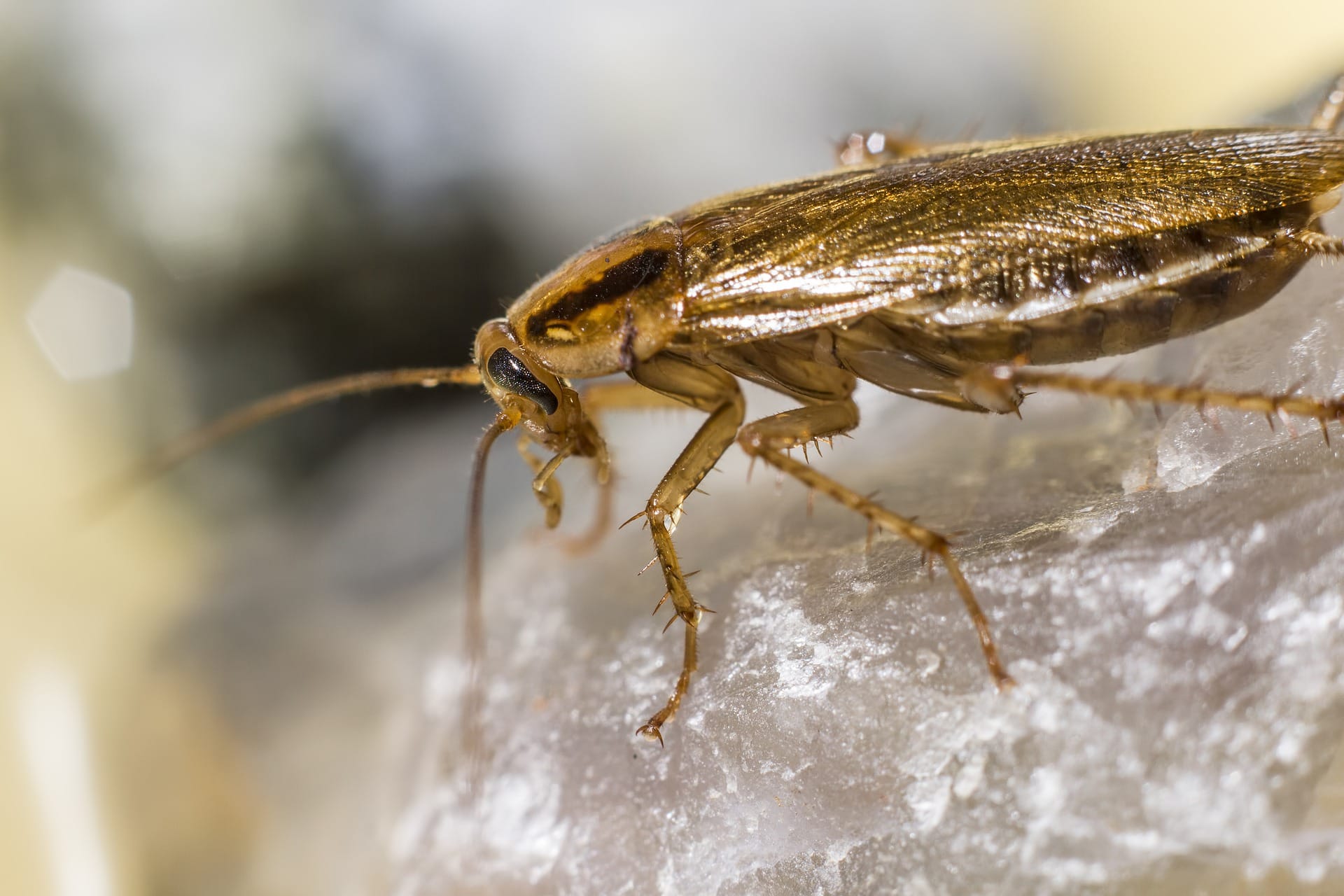Cockroaches: the very word sends shivers down most people’s spines. These creepy crawlies are known for their gross habits and their ability to survive anything. But what are some of the lesser-known facts about these nasty critters? Join us as we delve into the unsettling world of cockroaches and uncover some of the scariest facts you never knew.
Scary Facts About Cockroaches
Okay, let’s talk about cockroaches. Yeah, those creepy crawlers that send shivers down your spine. You might already know they’re tough, but what you’re about to read might just make your skin crawl.
These Guys Are Practically Unkillable
- Hold their breath? Please. Cockroaches can survive for a whopping 30 minutes without taking a single breath. Food? Water? Who needs them! They can go 130 hours without a bite and a whole nine days without a drop of water. Seriously, how do they do it?
- Think you can outrun them? Think again! These little ninjas can hit speeds of up to 3 miles per hour. And get this, they can jump over 1.5 feet high. Good luck catching them!
Built Like Little Tanks
- Let’s talk about their weird bodies. Their antennae aren’t just for show; they use them to chat with each other and find their way around. And don’t even get me started on their mouths and legs – those are designed for serious eating and moving.
- Ever heard of an open circulatory system? Yeah, it’s kind of gross. They don’t breathe like us; they absorb oxygen through their bodies. No lungs needed!
- And this is the worst part – you can cut off their heads, and they’ll keep on going… for a while anyway. They’re basically zombie insects! They can keep on ticking thanks to their exoskeletons, which let them absorb oxygen.
They’re Everywhere… And They Live Forever
- So, how long do these things live? On average, a year or two. But hold on, some types can stick around for four whole years! Talk about overstaying their welcome.
- But hey, it’s not all bad. Believe it or not, cockroaches play an important role in our planet’s ecosystem. They’re like nature’s clean-up crew, breaking down all the yucky stuff and keeping things tidy.
Superpowers? Maybe.
- Remember that saying “survivors of the apocalypse?” Well, cockroaches might just be the real deal. Scientists believe they could even survive a nuclear explosion! Talk about tough cookies.
- And good luck finding them! These masters of disguise love to hang out in dark, hidden places, lurking in the shadows until it’s time to come out and… well, you get the picture.
So next time you see a cockroach, take a moment to appreciate how truly bizarre – and kinda terrifying – these creatures really are. They’re a testament to nature’s creativity, even if they are a little creepy.
What are Some Nasty Facts About Cockroaches?
Okay, so we’ve already established that cockroaches aren’t exactly the most welcome house guests. But just how tough and persistent are these creepy crawlers? Let’s dive into some seriously unsettling facts about these resilient bugs.
Hold on to your hats, because this is where it gets really interesting (and by interesting, we mean gross).
Did you know that a cockroach can survive being submerged underwater for a whopping 40 minutes? Yeah, you read that right. Forty. Minutes. They essentially hold their breath, acting as tiny, disgusting scuba divers. And if you thought that was wild, get this: some species of cockroaches can even survive being frozen solid for a short time. Talk about hardcore!
And just when you thought it couldn’t get any worse, let’s talk about their ability to withstand radiation. Remember those post-apocalyptic movies where cockroaches inherit the earth? Well, there might be some truth to that. Studies suggest that cockroaches are far more resistant to radiation than humans, which means they’d probably outlive us in a nuclear fallout scenario.
But perhaps the nastiest fact about cockroaches is their knack for spreading diseases. These critters love hanging out in dirty, germ-infested places, picking up all sorts of nasty pathogens along the way. And guess what? They can track those germs right into your home, contaminating your food and surfaces with bacteria that can cause food poisoning, allergies, and even asthma.
Here’s a quick rundown of just some of the diseases cockroaches can spread:
| Disease | Symptoms |
|---|---|
| Salmonellosis | Diarrhea, fever, abdominal cramps |
| Staphylococcal infection | Skin infections, pneumonia, sepsis |
| Streptococcus | Strep throat, skin infections, pneumonia |
| Gastroenteritis | Vomiting, diarrhea, abdominal cramps |
| Dysentery | Severe diarrhea, blood in stool, abdominal pain |
| Typhoid fever | High fever, headache, abdominal pain, constipation |
So, what have we learned? Cockroaches are basically the ninjas of the insect world – stealthy, adaptable, and incredibly difficult to kill.
But here’s the good news: There are ways to prevent these nasty critters from setting up camp in your home. Keep your place clean, seal up cracks and crevices, and maybe invest in some good quality cockroach traps. Trust me, your peace of mind (and your stomach) will thank you.
What Makes Roaches So Scary?
Okay, so we’ve already talked about how creepy roaches can be, but let’s dive a bit deeper into why they freak us out so much.
First off, their ninja-like qualities are unsettling. You’ll never see them coming. They lurk in the shadows, squeeze into tiny cracks, and only come out when the lights are off. They’re experts at staying hidden, which just adds to the mystery (and terror) surrounding them. You never know where they might pop up next!
And don’t even get me started on their toughness. These guys can survive practically anything! Extreme heat? No problem. Freezing cold? Please. They even laugh in the face of things that would kill most other creatures. It’s kind of impressive, in a terrifying kind of way. No wonder people joke that they’ll survive the apocalypse!
Then there’s the unsettling reality of them potentially being walking germ factories. They crawl through all sorts of nasty stuff, picking up bacteria and viruses along the way, and then they can transfer those germs to our food or surfaces. Nobody wants to think about that, especially when it comes to keeping our homes and families healthy.
Let’s be real, for some people, the fear of roaches is no joke. It’s a real phobia, and it can be super debilitating. Imagine being so freaked out by the mere thought of a roach that it starts to affect your daily life, sleep, and even your mental health. That’s a level of fear that goes beyond the occasional shiver down the spine.
And to top it all off, roaches have this image problem that just won’t quit. Throughout history and across different cultures, they’ve been linked to dirt, disease, and decay. Think about it – when was the last time you saw a roach portrayed as anything other than disgusting in a movie or TV show? It all adds up to this negative perception that’s hard to shake.
But, there’s still a lot we don’t know about roaches, and who knows, maybe one day we’ll have a better understanding of them. Until then, we’ll just have to keep our Raid handy!
What is a Cockroach’s Biggest Weakness?
We’ve all heard the rumors: cockroaches could survive a nuclear apocalypse. While that might be a slight exaggeration, they’re definitely tough little critters. But even the mighty cockroach has its Achilles’ heel. Knowing their weaknesses is our secret weapon in the battle for a cockroach-free home.
So, what sends shivers down their spiny legs?
- Cold temperatures: These guys are basically tiny sunbathers. Temperatures below freezing will send them running for cover—or, more likely, just knock them out completely.
- Insecticides: We’re not talking about just any bug spray. You need the good stuff, the kind with active ingredients like boric acid or fipronil, which can put a stop to their buggy business for good.
- Traps: They lure unsuspecting roaches in with the promise of a tasty treat, only to trap them in a sticky (and fatal) embrace. Bait stations work in a similar way, using poison to contaminate the roaches and their buddies back in the nest.
- A good vacuuming: It might not sound like much, but it can really disrupt their groove. Vacuuming sucks up not just the roaches themselves, but also their eggs and food sources, making your home a whole lot less appealing.
- Diatomaceous earth: This powdery stuff is like kryptonite to cockroaches. It’s made from fossilized algae and it works by dehydrating the roaches and messing with their exoskeletons.
- Emerald cockroach wasps: This wasp has a rather disturbing habit of paralyzing cockroaches and laying their eggs inside them. When the wasp larvae hatch, they basically eat the cockroach from the inside out. Talk about metal.
Here’s the takeaway: Cockroaches might seem invincible, but they’ve got weaknesses just like everything else. By understanding their vulnerabilities—and using a combination of the methods we just talked about—we can send these unwanted houseguests packing for good.
Why Don’t You Crush Cockroaches?
Okay, you see a cockroach scuttling across your kitchen floor. Your first instinct? Grab the nearest shoe and smash! We get it; it’s a natural reaction. But here’s the thing: those creepy crawlers are tougher than they look. Their exoskeletons – basically, their outer shell – are insanely strong. Think of it like a tiny suit of armor that can withstand pressure up to 900 times their own weight! So, when you try to squish them, you’re probably not doing as much damage as you think.
You might just crack that tough exterior, which isn’t ideal. Not only will the cockroach probably live to see another day (ugh!), but you could be exposing yourself to some pretty nasty stuff. Remember, cockroaches like to hang out in dirty places, picking up bacteria and germs along the way.
Plus, some researchers suggest that crushing roaches can even release tiny particles into the air. Yuck! These particles might contain allergens that can trigger allergies or even asthma attacks in some folks.
So, what’s the best way to deal with these resilient pests? Instead of going for the squish, experts suggest turning to traps or baits. These methods are often more effective and less messy. And hey, they allow you to avoid getting up close and personal with those creepy crawlies!
Why are cockroaches SO hard to kill? Here’s the rundown:
| Feature | How it helps them survive |
|---|---|
| Super Strong Exoskeleton | Protects their internal organs from crushing |
| Ability to Flatten Their Bodies | Lets them squeeze into tight spaces to escape danger |
| Fast Reflexes | Helps them dodge your swift shoe! |
| Can Hold Their Breath for a Surprisingly Long Time | Allows them to survive underwater and even some cleaning products! |
The science behind cockroaches’ resilience is honestly pretty amazing. Scientists are constantly learning more about these creatures, and who knows what they’ll discover next!
What are Cockroaches Scared Of?
Cockroaches aren’t invincible! While they might seem like they’re fearless, there are actually quite a few things that make them scatter.
- Light and sudden movements: They love darkness and hate sudden movements. This instinct to hide helps them avoid predators.
- Strong smells: Ever notice how cockroaches seem to disappear when you clean with citrus or peppermint? That’s because they can’t stand those scents! They’re overpowering to their sensitive senses. Some folks swear by placing lemon peels or cotton balls soaked in peppermint oil around their homes to deter these creepy crawlies.
- Vibrations: Think about the rumble of a vacuum cleaner or the whirring of a blender. These vibrations are like mini earthquakes to a cockroach, signaling danger and sending them scrambling for a safe haven.
- Sticky substances: Petroleum jelly, glue traps, even double-sided tape can become an inescapable trap for these critters. They simply can’t navigate through the sticky mess, which makes these methods effective (if not a little icky) for controlling infestations.
Think about it – these fears are actually quite understandable!
Is It Worth Killing Roaches?
So, we’ve talked about how creepy cockroaches can be and how tough they are to get rid of. But is going to war with these little creatures really necessary? It’s a trickier question than you might think.
Let’s be real, roaches are practically survivors of a horror movie. They can handle crazy temperatures, laugh off radiation, and even survive for a bit without their heads! Plus, they reproduce like crazy, with females laying tons of eggs. Trying to control their numbers can feel like an impossible mission.
We’ve all heard the horror stories about roaches spreading diseases. They can carry all sorts of nasty stuff that can contaminate our food and countertops. Nobody wants to get sick, so it’s tempting to think that every roach needs to go.
But here’s the thing: those creepy crawlies actually do some good in the world, too. They’re like nature’s little garbage disposals, breaking down organic material and helping things decompose. It might sound gross, but it’s important for keeping our ecosystem in balance.
Then there’s the ethical side of things. Some people believe that all living creatures deserve respect, even the ones we find creepy. Killing them unnecessarily feels wrong. On the other hand, some folks argue that pests like roaches pose a threat to our health and homes, making it okay to eliminate them.
The good news is, you don’t always have to resort to bug spray and traps. There are ways to discourage roaches from moving in without killing them. Sealing up cracks and crevices in your home, keeping things squeaky clean, and using natural repellents can make your place a whole lot less appealing to those six-legged invaders.
At the end of the day, the choice is yours. Weigh the potential health risks against the ecological impact and your own personal beliefs. What works for one person might not work for another. The important thing is to make an informed decision that feels right for you, your family, and the environment.
Why are Cockroaches Disgusting?
We’ve all been there, right? You flick on the kitchen light in the dead of night, hoping for a midnight snack, only to see something skitter across the floor. Yep, it’s a cockroach, and suddenly your appetite vanishes. But what is it about these creepy crawlers that makes our skin crawl?
It’s not just their size, though some of them can get surprisingly big. It’s more than that. They have this shiny, almost armored, exoskeleton that just screams “tough bug,” and their long, waving antennae don’t exactly inspire warm, fuzzy feelings. Plus, those little hairs covering their bodies often make them look greasy. And speaking of crawling, their reputation as scavengers doesn’t exactly help. They’ll eat practically anything they can get their six little legs on – garbage, decaying food, even, sorry to say it, poop.
This “eat-anything” attitude is what makes them a real health hazard. By feasting on dirty, germ-ridden things, they pick up and spread bacteria and viruses everywhere they go. It’s enough to make anyone squeamish.
And it’s not just about what they carry; it’s about what they do. Cockroaches can trigger allergies and asthma attacks in some people. Their droppings and shed skin contain allergens that can cause breathing problems and skin irritations.
But there’s more to our disgust than just the ick-factor. From a young age, we’re conditioned to think of cockroaches as dirty, disease-ridden pests. This association gets deeply ingrained in our minds, making it almost instinctive to recoil at the sight of one.
Our culture plays a role too. In many societies, cockroaches are seen as symbols of filth and neglect. This cultural conditioning further reinforces our negative feelings towards these insects.
Scientists believe our aversion to cockroaches might actually be an evolutionary survival tactic. By avoiding creatures that thrive in filth and potentially carry diseases, our ancestors increased their chances of survival. So, our “eww” reaction to cockroaches could actually be a sign of our ancestors’ wisdom passed down through generations!
The study of cockroaches and their impact on humans is ongoing. Researchers continue to learn more about their behavior, the diseases they carry, and ways to effectively control their populations. While we might never find them cuddly, understanding these creatures can help us better manage our environments and prevent potential health risks.
How Nasty is a Roach?
Their reputation for being nasty isn’t exactly undeserved.
These critters are like the ultimate survivors. Their ability to live without their heads for a while? Downright creepy, but a testament to how resilient they are. Their secret weapon? A nervous system that isn’t reliant on a central brain and a body armor-like exoskeleton.
And if you thought things couldn’t get grosser, hold onto your hats. When food is scarce, they turn into cannibals! Yup, they’ll eat their own kind to survive. It’s a grim strategy but keeps the strongest alive and the population in check.
Here’s a fun fact you probably didn’t know (and by fun, we mean terrifying): cockroaches can explode. Okay, not spontaneously, but they do have a surprisingly low boiling point. Too much heat and boom – they go out with a bang due to the pressure building up inside them.
Now, while cockroaches play a role in breaking down waste, they’re also notorious for spreading diseases. Think about it: they crawl through filth, and their bodies become a haven for nasty bacteria and viruses.
But before you declare roaches the invincible overlords of the insect world, take heart. They do have weaknesses. Remember that exploding thing? That intense heat is their downfall. Plus, they’re pretty vulnerable to certain insecticides.
So, while we may never fully be rid of these resourceful critters, understanding their disgusting habits and vulnerabilities can help us keep them at bay.
What are 5 Facts About Cockroaches?
We’ve already talked about how tough cockroaches are, but did you know just how much they can handle? These guys are like the superheroes of the insect world when it comes to survival. They can deal with crazy high and low temperatures that would fry or freeze most other critters. And get this – they can even withstand radiation better than we can! It’s partly because of their tough outer shell and partly because their nervous system is spread out instead of being all in one place, making them incredibly hard to kill. Even losing their heads won’t slow them down for long!
And if you’ve ever had a cockroach problem, you know they seem to multiply overnight. It’s not your imagination! Female roaches are like little egg-laying machines. Over their lifetime, they can pop out hundreds of eggs, which explains why their populations explode and why getting rid of them feels like a never-ending battle.
Now, let’s talk about their eating habits. These guys aren’t picky eaters at all. They’re like the garbage disposals of the insect kingdom, happily munching on everything from leftover pizza crusts to wood, leather, and even…wait for it…human skin! It’s this scavenging nature that makes them a potential health hazard. Think about all the nasty stuff they crawl over; they pick up all sorts of bacteria, viruses, and fungi along the way, spreading germs wherever they go.
Trying to catch a cockroach is like trying to catch a shadow. These guys are crazy fast, zipping around at speeds up to 3 miles per hour! Plus, they’re like tiny ninjas, mostly coming out at night and squeezing into tiny cracks and crevices. Good luck trying to find them when they don’t want to be found!
So, to sum it all up:
- Cockroaches are incredibly tough. They can survive things that would kill most other creatures.
- They reproduce like crazy. A few roaches can turn into a full-blown infestation before you know it.
- They’ll eat almost anything. Leftovers, trash, even things that don’t seem edible to us…it’s all fair game for a cockroach.
- They’re quick and sneaky. Their speed and ability to hide make them difficult to track down and eliminate.
- They can be bad for our health. They pick up and spread germs, potentially making us sick.
Remember, scientists are always learning new things about cockroaches. This is just a glimpse into their fascinating, albeit slightly disturbing, world!
What is Fear of Roaches Called?
So, we’ve already talked about how much those creepy crawlies freak some people out. But did you know there’s an actual name for that fear? It’s called katsaridaphobia, and it’s more common than you might think!
Think about it – roaches are like the ultimate survivors. They’ve been around forever, can live through practically anything, and multiply faster than you can say “ewww!” Plus, we all know they love hanging out in dirty places, which just adds to the whole “ick” factor. It’s no wonder people get a little freaked out by them!
Some folks develop this fear after a particularly bad experience, like finding one in their cereal bowl (shudder). Others might have picked it up from family members who are terrified of roaches themselves. Either way, it’s a real phobia that can really impact someone’s life. They might avoid certain places, like basements or attics, just to avoid a potential roach encounter.
Now, the good news is that katsaridaphobia can be managed. Therapists have some pretty clever tricks up their sleeves, like slowly introducing people to roaches in a safe environment. This helps them gradually get used to the idea of being around them without freaking out. Therapy can also help folks challenge those negative thoughts and beliefs they have about roaches, replacing them with more realistic ones.
The point is, if you or someone you know is struggling with a fear of roaches, there’s help out there! Overcoming this phobia can seriously improve quality of life, so don’t hesitate to reach out to a professional.
Did you know that squirrels can transmit rabies and have sharp claws that can cause serious injuries? Explore more scary facts about squirrels. And have you heard that sea anemones can sometimes clone themselves and use their tentacles to paralyze prey? Discover more sea anemone fun facts.
- Senior at What Age: Benefits & Eligibility Guide - March 29, 2025
- Unlocking Senior Benefits: How Old is a Senior? Your Complete Guide - March 29, 2025
- Master Russian Politeness:A Guide to Saying Please - March 29, 2025
















